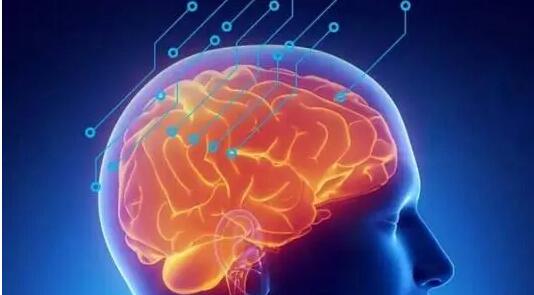IB心理学:生物学方法的关键术语词汇汇总
今天我们接着看IB心理学生物学方法。生物学方法是通过检查生物因素来研究行为。下面的词汇表将帮助同学了解这些因素是什么?了解关键术语的含义是学习任何心理学主题的第一步。
以下A加未来张老师给大家整理的IB心理学中生物学方法的关键术语及其定义列表。

主要词汇表
The biological approach to understanding human behavior:Trying to understand human cognition and behaviour by looking at how they’re affected by biological factors.
理解人类行为的生物学方法:通过研究人类的认知和行为如何受到生物学因素的影响来尝试理解它们。
Technological techniques (used to study the brain): A range of new technologicaltechniques used to study the relationships between the brain and behavior, e.g. fMRI / MRI / PET / EEG (You should be able to summarize how at least one of these work, e.g. fMRI is a brain imaging technique that uses magnetic fields to measure brain activity.
•技术技术(用于研究大脑):用于研究大脑与行为之间关系的一系列新技术,例如fMRI / MRI / PET / EEG(相信大家能总结出至少其中一种是如何工作的,例如,fMRI是一种大脑成像技术,它使用磁场来测量大脑活动。
•Localization (of brain function): The term used to describe how different parts of the brain perform different functions.
•(大脑功能的)定位:该术语用于描述大脑的不同部分如何执行不同的功能。
•Neuroplasticity: The brain’s ability to change as a result of experience.
•神经可塑性:根据经验,大脑的变化能力。
•Neurotransmitter: A chemical messenger that sends messages along neural pathways. A variety of these have been identified and associated with different behaviours.
•神经递质:一种化学信使,可以沿着神经途径发送信息。已经确定了其中的各种,并与不同的行为相关联。
•Neurotransmission: The process of neurons sending signals to each other – they send signals and communicate with one another through neurotransmitters.
•神经传递:神经元彼此发送信号的过程-它们发送信号并通过神经递质彼此通信。
•Hormone: A chemical messenger that is transported through the bloodstream. These messengers affect physiological processes and behaviour.
•激素:通过血液运输的化学信使。这些信使会影响生理过程和行为。
•Pheromone: A chemical messenger that is sent from one animal and it has an effect on a different animal.
•信息素:一种从动物身上发出的化学信使,它对另一只动物有影响。
•Gene: A sequence of DNA. They have an effect on behaviour through gene expression – the sending of signals from the gene to outside the cell.
•基因:DNA序列。它们通过基因表达对行为产生影响-从基因向细胞外部发送信号。
•Genetic similarities: The use of people with similar genes in research, e.g. identical (monozygotic) and fraternal (dizygotic) twins. These are used as variables in studies on the relative effect of genes on behaviour (e.g. heritability).
•遗传相似性:在研究中使用具有相似基因的人,例如同卵(单卵)和异卵(双卵)。这些在研究基因对行为(例如遗传性)的相对影响时用作变量。
•Twin study: A twin study uses MZ and DZ twins and compares their behaviour in order to measure heritability.
•孪生研究:孪生研究使用MZ和DZ孪生并比较其行为以测量遗传力。
•Evolutionary explanation of behavior: Explaining how a behaviour helps an individual to pass on their genes by helping them to survive, procreate and/or produce healthy offspring (children).
•行为的进化解释:解释行为如何通过帮助个体生存,繁殖和/或繁殖健康的后代(儿童)来帮助个体遗传。
•Animal model (HL): The use of animals in research to understand how biological factors affect behaviour. (The term can refer to the specific animals themselves, but can also refer to the general explanation of biology and behaviour that is gained from the animal experiment/s.)
•动物模型(HL):在研究中使用动物来了解生物学因素如何影响行为。(该术语可以指特定动物本身,但也可以指从动物实验中获得的生物学和行为的一般解释。)
了解这些术语是第一步,想获得高分,同学们要能进行延伸并能够为这些主题中的一些给出具体的示例,并对它们进行定义。以下是部分延伸词汇:
附加词汇
•Neural network: A series of connected neurons that allows the processing and transmitting of information. Specific networks are responsible for specific tasks.
•神经网络:一系列连接的神经元,允许处理和传输信息。特定的网络负责特定的任务。
•Neural pruning: (aka Synaptic pruning) This happens when we lose these synaptic connections in a neural network because we do not use them.
•神经修剪:(又名突触修剪)当我们由于不使用它们而在神经网络中丢失这些突触连接时,会发生这种情况。
•Synapse: The space between two neurons where neurotransmitters are fired.
•突触:发射神经递质的两个神经元之间的空间。
•Excitatory neurotransmitter: An excitatory neurotransmitter binds to receptor sites and increases the chances of the post-synaptic neuron firing (sending a signal).
•兴奋性神经递质:兴奋性神经递质与受体位点结合,增加突触后神经元激发的机会(发送信号)。
•Inhibitory neurotransmitter: A neurotransmitter that binds to receptor sites and reduces the chances of the post-synaptic neuron firing (sending a signal).
•抑制性神经递质:一种与受体位点结合并减少突触后神经元放电(发送信号)的机会的神经递质。
•Agonist: A chemical that amplifies the effect of a neurotransmitter by binding to the receptor sites of that neurotransmitter and activating them.
•激动剂:一种化学物质,可通过与神经递质的受体位点结合并激活它们来放大神经递质的作用。
•Antagonist: A chemical that reduces the effect of a neurotransmitter by binding to and blocking the receptor sites of that neurotransmitter.
•拮抗剂:一种化学物质,通过结合并阻断神经递质的受体位点来降低神经递质的作用。
•Neuron: A neuron is a type of cell that receives, processes, and transmits information through electrical and chemical signals.
•神经元:神经元是一种通过电和化学信号接收,处理和传输信息的细胞。
以上就是老师给大家整理的IB心理学中生物学方法的关键术语及其定义列表。相信大家通过对这些关键术语的了解和记忆,可以快速提高对心理学的认知和了解,最终获得自己满意的成绩。
 喜欢 [0]
喜欢 [0] 相关推荐

- How to produce? 开源节流
知识点 2023-02-15

- AP生物模考题
知识点 2023-01-18

- what to produce? 商人逐利
知识点 2023-01-10

- Questions to be answer 谁来回答这三个问题?
知识点 2023-01-09









